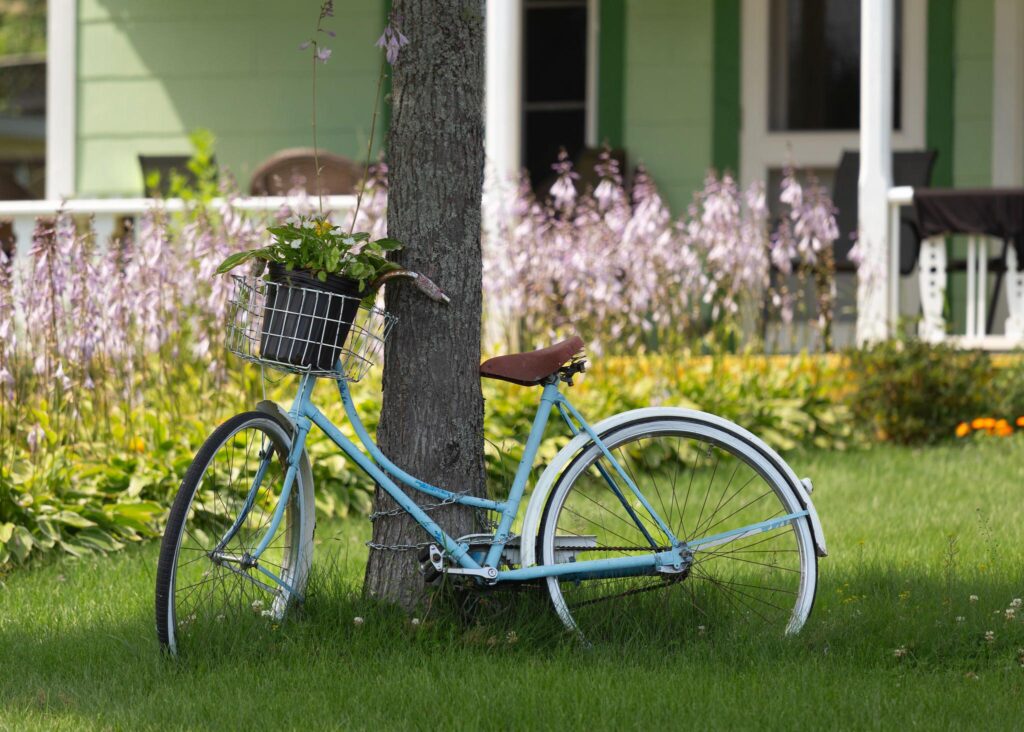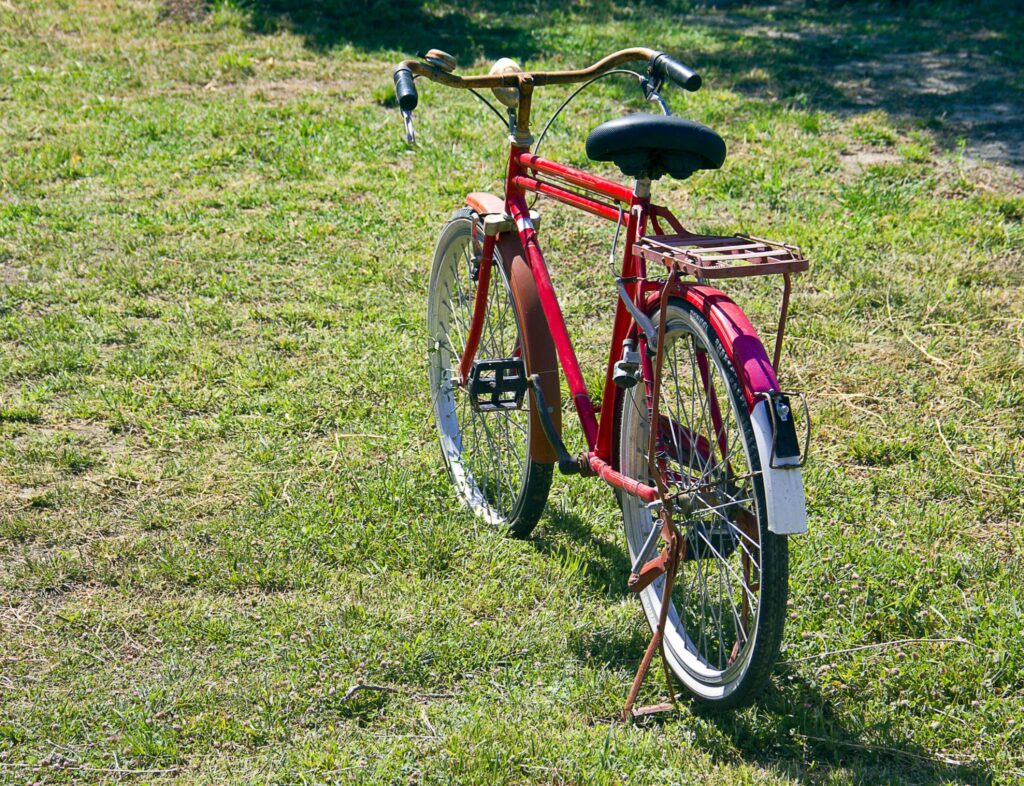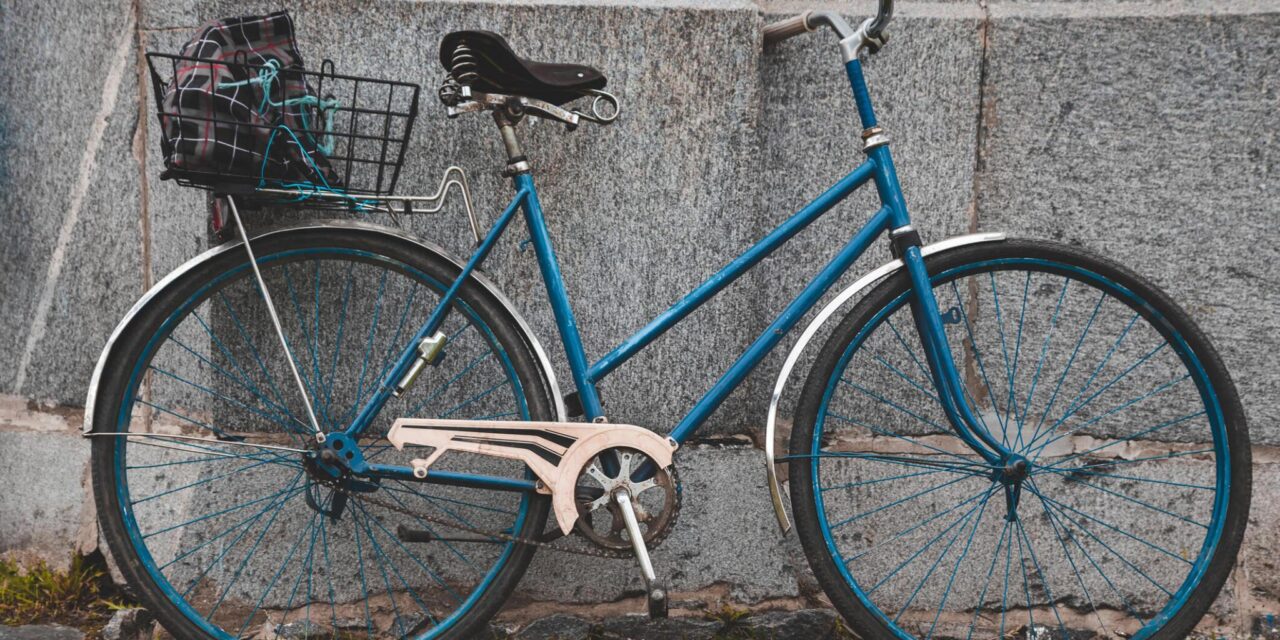The rusty bicycle, often overlooked as mere debris from yesteryear or a neglected artifact, indeed embodies significant emotional and cultural dimensions, alongside its pivotal role in the chronicles of transportation. Emerging in the 19th century as a groundbreaking means of individual mobility, the bicycle has continually morphed to align with the technological advancements and shifting preferences of society. Nonetheless, not all bicycles have journeyed through this path of transformation. A great number have been forsaken, left to the mercy of the elements, eventually succumbing to rust.
Rust, or iron oxide, manifests from the combination of iron, oxygen, and water. This chemical process not only alters the exterior of a bicycle, bestowing upon it a distinct orange-brown hue, but also compromises its structural integrity. Despite their decay, the rusty bicycle are vessels of memories and narratives. They evoke a sense of longing for days filled with exploration and unbridled joy. To some, these bicycles represent a challenge—a quest to revive an artifact lost to time.
Table of Contents
Moreover, the existence of the rusty bicycle in our midst acts as a subtle metaphor for the ephemeral nature of material possessions and the inexorable advance of time. They remind us of the significance of maintenance and care, and perhaps, of finding beauty in the flawed and the aged. As we navigate through the annals of time, the rusty bicycle stands as a poignant emblem of our past endeavors and the voyages that lie ahead.
Reviving History: The Rusty Bicycle Restoration Journey
This article will walk you through the steps of assessing, disassembling, cleaning, preparing, priming, and painting your bicycle, offering pro tips to tackle even the most stubborn rust.

Understanding Rust and Its Effects on Bicycles
Rust, or iron oxide, occurs through an oxidation reaction between iron-containing materials, oxygen, and moisture. This process can severely affect bicycles, which are often exposed to these elements. The rusty bicycle not only mars the aesthetic appeal of your bike but can also weaken its structural integrity and impair functionality, making it crucial to address.
Assessment: Gauging the Damage
Begin your restoration journey by meticulously inspecting your bicycle for rust. Use a flashlight to illuminate hard-to-see areas and a cloth to clean off dirt and grime for a clearer view. Focus on common rust hotspots such as the frame, chain, gears, and wheel rims. Surface the rusty bicycle will appear as a reddish-brown discoloration and can often be removed with light treatment. However, deep corrosion, characterized by pitting or holes, may require more intensive restoration or even part replacement.
Disassembly: Breaking It Down
Disassembling your bike is crucial for a thorough restoration. This process allows you to inspect each component individually and ensures a more effective cleaning and painting job. Start by removing easily detachable parts such as the wheels, seat, and pedals. Progress to the chain, gears, and finally, the handlebars. Keep a systematic record of each step to ease reassembly later. If you encounter any difficulties, consider consulting a bike repair manual or a professional mechanic for guidance.
Cleaning: The First Step to a New Beginning
With your bike disassembled, initiate the cleaning process by wiping down all parts with a mild detergent solution. This step removes surface dirt and prepares the bike for more detailed rust treatment. For the rusty bicycle areas, employ a combination of steel wool, a wire brush, or sandpaper to scrub away corrosion. Be gentle to avoid damaging the metal underneath. For tough rust, a specialized rust remover or a homemade solution of vinegar and baking soda can work wonders. Ensure all parts are thoroughly rinsed and dried to prevent new rust from forming.
Surface Preparation: Laying the Foundation
Proper surface preparation is key to a successful restoration. After removing rust, smooth out the affected areas with sandpaper to ensure an even surface. This not only removes any lingering corrosion but also helps the primer and paint adhere better. For deep pits or scratches, consider using a metal filler to create a smooth, uniform surface.

Priming: Shielding Against Future Rust
Priming is essential for protecting your bicycle from future the rusty bicycle. Select a primer designed for metal surfaces and specifically formulated to prevent rust. Apply the primer evenly across all metal parts, following the manufacturer’s instructions for the best results. Allow adequate drying time before moving on to painting. This layer acts as a protective barrier and a perfect base for the final color.
Painting: The Final Touch
Choosing the right paint is crucial for both the appearance and longevity of your restoration. Opt for a high-quality, durable paint suitable for metal surfaces and resistant to environmental elements. Apply the paint in thin, even coats to avoid drips and unevenness. Depending on the product, several coats may be necessary, with adequate drying time in between.
For a professional finish, consider using spray paint in a well-ventilated area, employing smooth, sweeping motions to ensure even coverage. Once the final coat is dry, you may want to apply a clear sealant for extra protection and shine.
Reassembly: Putting It All Back Together
With the painting complete and your bike components restored, it’s time to reassemble. Refer back to the notes and photos you took during disassembly to guide you through the process. Begin with the frame, gradually adding each component in reverse order of removal. Pay careful attention to the alignment of parts and the tightening of screws and bolts to ensure your bike is safe and ready to ride.
Conclusion: Enjoying Your Restored Bicycle
Restoring a the rusty bicycle is a rewarding project that extends the life of your cherished ride and restores its former aesthetic charm. By following this comprehensive guide, you’re not only saving your bike from the scrapheap but also engaging in a sustainable practice that benefits the environment. So, gear up, hit the road, and enjoy the renewed pleasure of cycling on your beautifully restored bicycle.










